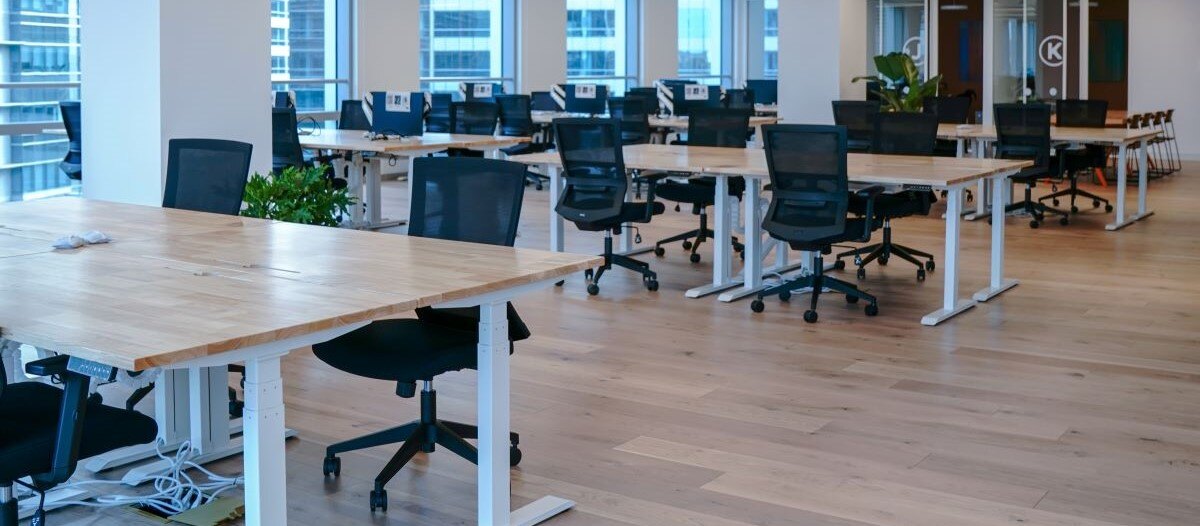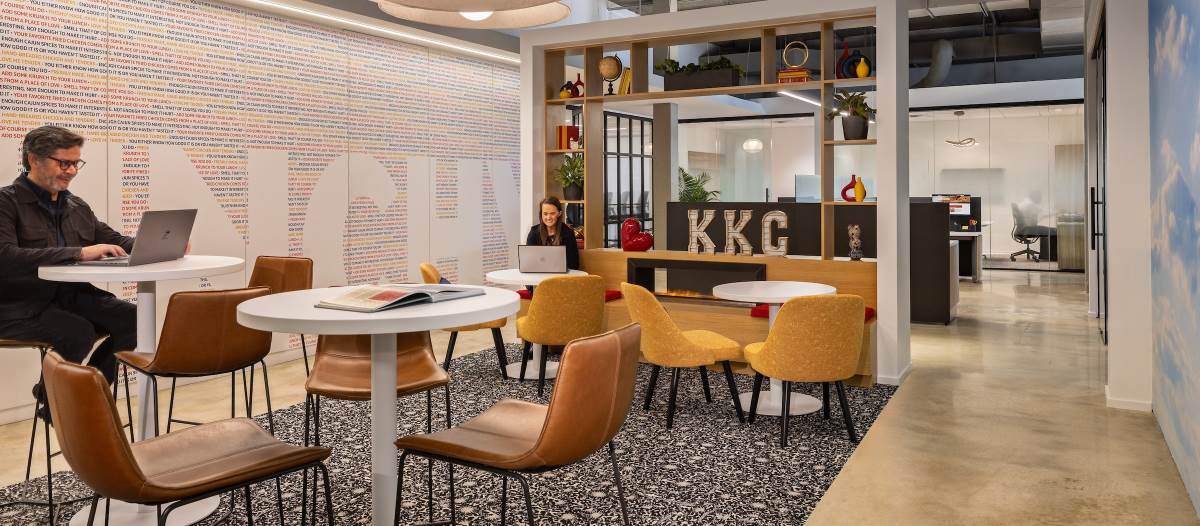Shaping the Workspace
Strategic space management

Space management, a critical aspect of facility management, involves the deliberate orchestration of a business' physical spaces to align with broader objectives such as productivity, sustainability, profitability and well-being. For seasoned FMs, the nuanced understanding and strategic implementation of space management goes beyond mere spatial arrangement. Comprehensive space management is multifaceted and can have profound impacts on productivity, profitability, and employee and customer satisfaction.
Strategy
The essence of space management for experienced professionals is about leading the strategic planning around facility use and implementation of the planning that will positively impact business objectives. But this strategic planning is more than just the physical arrangement of office space – adopting a holistic approach goes beyond arranging furniture; it encompasses an efficient space plan that meets current and future needs. The strategic plan aligns spatial decisions with the overall goals of the organization and can include offices, retail spaces, warehouses and manufacturing areas. For example, a business might redesign its headquarters to include more collaborative spaces, leading to a boost in innovation and teamwork. A retailer could reorganize its store layout to improve customer flow and increase sales. A manufacturing company might rearrange its production floor for improved workflow and safety, resulting in higher productivity and fewer accidents.
An efficient space management system can reduce the costs associated with rent, utilities and maintenance. As remote and hybrid working arrangements become more common, many companies are rethinking their use of space and how to enable flexible working conditions both on- and off-site. The goal is to tailor space to ensure optimal functionality.
Up to 40 percent of an organization’s expenses can be related to their facilities.
The targeted business objectives should consider both employee and customer needs for the space under consideration. Each space should align with its specific and overall business objectives to create cohesive and purposeful environments. The success of the design will directly address productivity and profitability, as well as customer satisfaction. Effective space management has real-world examples of increasing productivity, innovation, teamwork and sales.
Things to consider
The key elements of effective space management include aligning business objectives, the space under management, employee and customer experience.
All strategic decisions should be tailored to business objectives. Having a clear view of an organization’s mission, values and goals is paramount to design spaces that help achieve business objectives. Space allocation and management should be aligned with business priorities and company culture. What are the organization’s short- and long-term goals? How best to allocate spaces based on short-term priorities and relevance to business objectives while ensuring that the space usage is also aligned with long-term organizational goals?
If a space manager’s responsibility is to optimize the value of an asset class – space – then they need to know as much about that asset class as possible. They require a comprehensive inventory of the physical space they will be managing; this includes understanding current usage, potential for expansion or contraction and the condition of the space (areas requiring improvement). Space management is not a static activity. It is dynamic and must include scenario planning for future space allocation, evolving organizational needs and long-term business objectives.
Optimizing the value of an organization’s space is directly tied to improving both employee and customer experience in that space. For employees, the focus should be on creating workspaces that foster productivity of individuals as well as teams; spaces that foster collaboration, interaction and creativity. These should accommodate different working styles and preferences where possible. For customers, space management should provide positive and seamless experiences, enhance flow and satisfaction, and align with their expectations and preferences.
Benefits
The benefits that can be derived from a holistic approach to comprehensive space management are significant. The cost efficiency alone can often justify the solution and implementation expense. A holistic approach enables an organization to more broadly analyze real estate investments, leasing decisions and property acquisitions in relationship to the space management plan. Well-planned spaces help limit real estate expenses tied to lease liabilities and penalties.
Taking a broader view helps ensure the decision-making process considers economic fluctuations, future expansion or consolidation plans, and better appreciation for where there is a need for more information for improved outcomes. In today’s enlightened environment, this broader view should also include sustainability. How are space management decisions aligned with the organization’s implementation of energy-efficient practices helping reduce utility costs, reducing waste and promoting recycling, contributing to sustainability goals and decreasing the environmental impact of facilities? Minimizing the carbon footprint of a facilities portfolio can also include integrating energy-efficient lighting, appliances and office equipment, as well as leveraging alternative energy sources and proactive monitoring of energy usage.
Many organizations have recognized improved employee experience and increased workplace productivity. Employee satisfaction and performance can be directly impacted by well-designed workspaces. The design can include factors like lighting, ventilation, ergonomic furniture and amenities. A well-designed space can reduce downtime and enhance employee retention, especially if the space is well maintained and the office equipment is functioning correctly. Competing for business is stressful in today’s global marketplace; office environments should not contribute to that stress. The goal in successful space management should be to create a frictionless office environment that accommodates emerging hybrid-work models to meet diverse work preferences. Hybrid workspaces include the implementation of hot desks, flexible workstations, effortless workstations and meeting room reservations, as well as collaborative areas and quiet zones. Taking a holistic approach to space management naturally fosters collaboration within the organization, helping eliminate miscommunication, lack of clarity and avoiding costly mistakes in anticipating future needs.
Naturally there are as many space management solutions as there are organizations that implement them. But in general categories there are organizations that still rely mainly on manual planning, those that do semimanual, those with siloed solutions and those that have adopted a holistic approach.
The manual process of annotating blueprints or relying on CAD/CAM files focuses only on the physical space. It limits planning to a box of square feet. The semimanual and siloed approaches limit an organization’s ability to encompass scenarios, what-ifs and trade-off analysis. With these approaches an organization will need to develop and maintain the integration connectors between each tool. This can lead to lost information, data integrity and currency issues.
Moving forward
Implementing space management as part of a broader holistic FM solution provides an organization with essentials for making optimal strategic decisions: shared, single-source facilities information, comprehensive reporting and dashboards, workflow and process automation, dynamic floorplans and traffic patterns, and maintenance and operations status. A holistic solution is ideal for organizations managing multiple buildings, campuses or multiple locations. The DNA of a holistic approach is the shared data coming from ongoing operations and IoT sensors (monitoring workflow patterns, energy usage, etc.). This shared information approach makes it much easier to do analytics today and leverage technologies like artificial intelligence and machine learning in the future.
Whatever the organization title – space planner, facility manager, real estate manager – space planning is much more than just space. Today, someone tasked with optimizing an organization’s space must appreciate the scope of truly maximizing the value of space. They are not only responsible for overseeing day-to-day operations related to space utilization and FM, but they are also responsible for leading a multidisciplinary effort spanning HR, IT and finance. The role is both tactical and strategic: making the best space decisions today while ensuring tomorrow.
Space is a valuable asset that demands careful management to optimize returns for any organization. For seasoned FMs, adopting a comprehensive space management solution is crucial in navigating the complex landscape of facilities and ensuring a positive impact on productivity, profitability, and workforce and client satisfaction.
By integrating the proper space management strategies and leveraging advanced technologies, FMs can both meet the current spatial needs of their organizations and adapt to future changes. The multifaceted nature of space management requires a holistic understanding of business objectives, employee experience, customer behavior and the physical spaces themselves.
In this dynamic landscape, where remote and hybrid work models are becoming more prevalent, the adaptability of space management becomes paramount. The responsible use of technology, such as AI, IoT sensors and room booking platforms, empowers facility managers to make data-driven decisions, optimize space usage and contribute to broader sustainability goals.
Ultimately, strategic space management is not just about arranging desks and chairs; it is about orchestrating a harmonious blend of physical spaces that align with the organization's vision, values and goals. Space management needs to be an integrated component of a holistic real estate and facility management strategy. Optimizing space value becomes an input or output of an organization’s capital planning, lease management, maintenance and operations, sustainability initiatives and eventually the disposition of facilities. As seasoned professionals, FMs not only play a pivotal role in shaping the future of work environments – driving efficiency and creating spaces that enhance the overall well-being of employees and the satisfaction of clients – they are the virtual business owners of one of the organization’s most significant investments.

Brian Sanders is a product marketing director at IBM focusing on the real estate and facility management marketplace. He focuses on advocating for an integrated, end-to-end management approach to improving the productivity of staff, ongoing maintenance and upkeep of facilities, lifetime value of property and cost of real estate operations. Sanders is especially interested in uncovering the value of a holistic approach to managing the lifecycle of real estate portfolios.
Read more on Occupancy & Human Factors , Real Estate and Workplace
Explore All FMJ Topics









